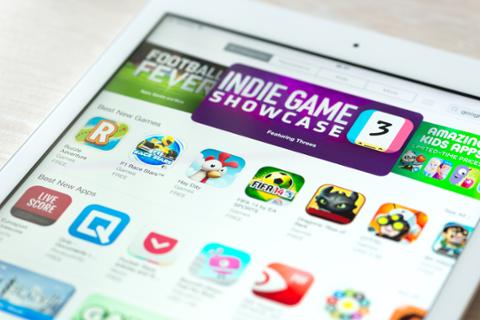[caption id="attachment_138519" align="aligncenter" width="1360"]

Mac App Store WWDC 2016[/caption] When the
app subscription-pricing model first launched, it was touted as a way for developers to earn recurring income. Now Apple has made it easier to offer lower "introductory pricing," which could earn developers more customers. In the
second developer beta for iOS 11.2, Apple introduced this interesting new wrinkle for subscription billing:
Soon, you’ll be able to offer new customers a discounted introductory price for your auto- renewable subscriptions on the App Store. iOS 11.2 introduces new classes (SKProductDiscount and SKProductSubscriptionPeriod) and new properties on SKProduct (subscriptionPeriod and introductoryPrice) to provide details on the introductory pricing and billing period you’ve selected for your auto-renewable subscriptions. You can use these new API additions to localize and display information about introductory pricing to your users. You’ll be able to configure introductory pricing on your in-app purchase page in iTunes Connect soon.
For example: a single app could arrive in the App Store with a price of $0.99 per month, but scale up to a monthly price of $3.99 after a short introductory period. The issue is that we’re still not sure what guidelines Apple is attaching to this scheme. That $0.99 could, in theory, skyrocket abruptly to $99 unless Apple has some stopgaps in place to thwart abuse. (Such unwelcome price hikes would also cause headaches for Apple staff who are charged with reviewing return and refund claims.) We also don’t know how introductory pricing aligns with free trials, which a developer can already offer. If there's an option to merge the two, an app could be free for the first month, then $0.99 before settling at $3.99. This new process may require a bit of business acumen from developers, too. Apple reduces its take of subscriptions after the first year from 30 percent to 15 percent. Depending on how Apple structures this program, a longer introductory period may encourage users to stick with an app – or leave it ahead of that change in the revenue split, when a developer is able to really profit. This is yet another reminder to developers that their subscription pricing models probably need examination. A
previous study suggested current app pricing is largely off, and the cost of acquiring a new customer always needs to be accounted for, as well. In a similar vein, a subscription model
may not work well for every app. Some users feel betrayed by the simple notion of subscription pricing, and subsequently give one-star reviews out of spite. There’s also an argument that subscription pricing
makes developers more creative. When held accountable to a group of ‘power’ users, developers find that updates and improvements become critical. Subscriptions also allow a developer to iterate on their product rather than continue to throw additional apps into the App Store or Google Play in an attempt to earn more money.
 Mac App Store WWDC 2016[/caption] When the app subscription-pricing model first launched, it was touted as a way for developers to earn recurring income. Now Apple has made it easier to offer lower "introductory pricing," which could earn developers more customers. In the second developer beta for iOS 11.2, Apple introduced this interesting new wrinkle for subscription billing:
Mac App Store WWDC 2016[/caption] When the app subscription-pricing model first launched, it was touted as a way for developers to earn recurring income. Now Apple has made it easier to offer lower "introductory pricing," which could earn developers more customers. In the second developer beta for iOS 11.2, Apple introduced this interesting new wrinkle for subscription billing:

